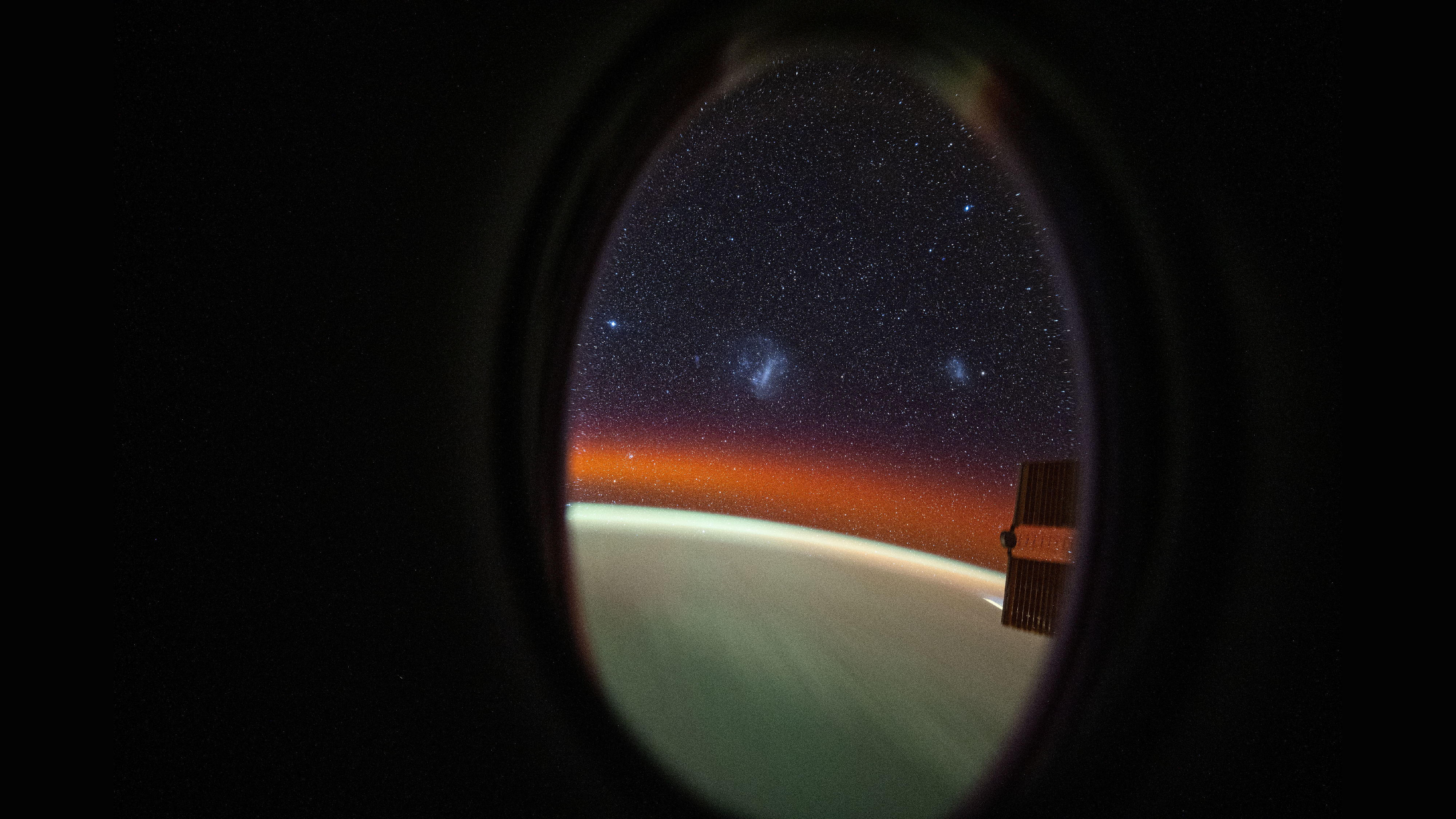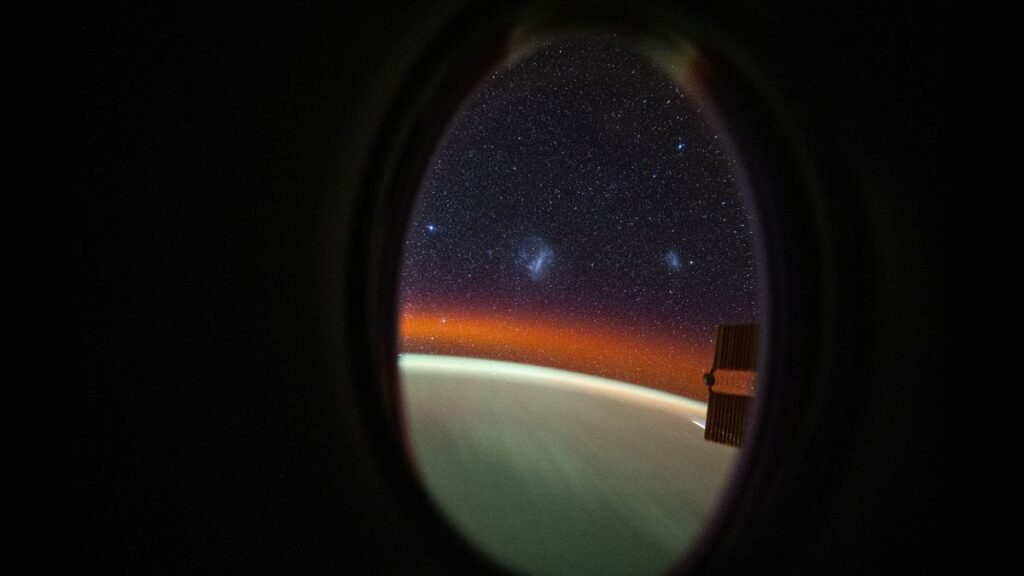
What it is: The Large Magellanic Cloud and the Small Magellanic Cloud, two dwarf satellite galaxies of the Milky Way
Where it is: 160,000 light-years away, in the constellations Dorado and Mensa (for the Large Magellanic Cloud) and 200,000 light-years away, in the constellations Tucana and Hydrus (for the Small Magellanic Cloud)
When it was shared: Dec. 2, 2024
Why it’s so special: Our Milky Way galaxy does not travel through space alone. A spiral galaxy with a disk that spans more than 100,000 light-years, it sits within a neighborhood called the Local Group, which includes more than 50 other galaxies. Some of the neighborhood’s less-massive galaxies orbit the Milky Way as satellites.
Two satellite galaxies, the Large Magellanic Cloud and the Small Magellanic Cloud, can be seen in the night sky only from the Southern Hemisphere — or from space. This image was taken by Don Pettit, NASA’s oldest active astronaut, at 69 years old. He arrived at the International Space Station (ISS) on Sept. 11, after launching from Kazakhstan in a Russian Soyuz spacecraft, along with two Russian cosmonauts.
He took this long-exposure image from a SpaceX Crew Dragon capsule docked to the ISS. It was one of three related images published on X by NASA; two featured the Magellanic Clouds, and the other showed the Milky Way.
Called irregular satellite galaxies because of their distorted shapes, the Magellanic Clouds each contain billions of stars. Many incredible astronomical observations have been made there. Perhaps the most famous was in the Large Magellanic Cloud, where in 1987, astronomers spotted the last supernova to be seen with the naked eye.
Last month, astronomers revealed the first high-quality, zoomed-in photo of a star outside our galaxy. Located in the Large Magellanic Cloud, the star, WOH G64, is 1,500 times wider than the sun and on the brink of exploding in a violent supernova.
The Magellanic Clouds are most easily seen between December and April from the Southern Hemisphere.
On his fourth spaceflight, Pettit has been taking long-exposure images and posting them on X, including a star trail, SpaceX Starlink satellites and Las Vegas at night, one of the brightest places on Earth.
For more sublime space images, check out our Space Photo of the Week archives.
